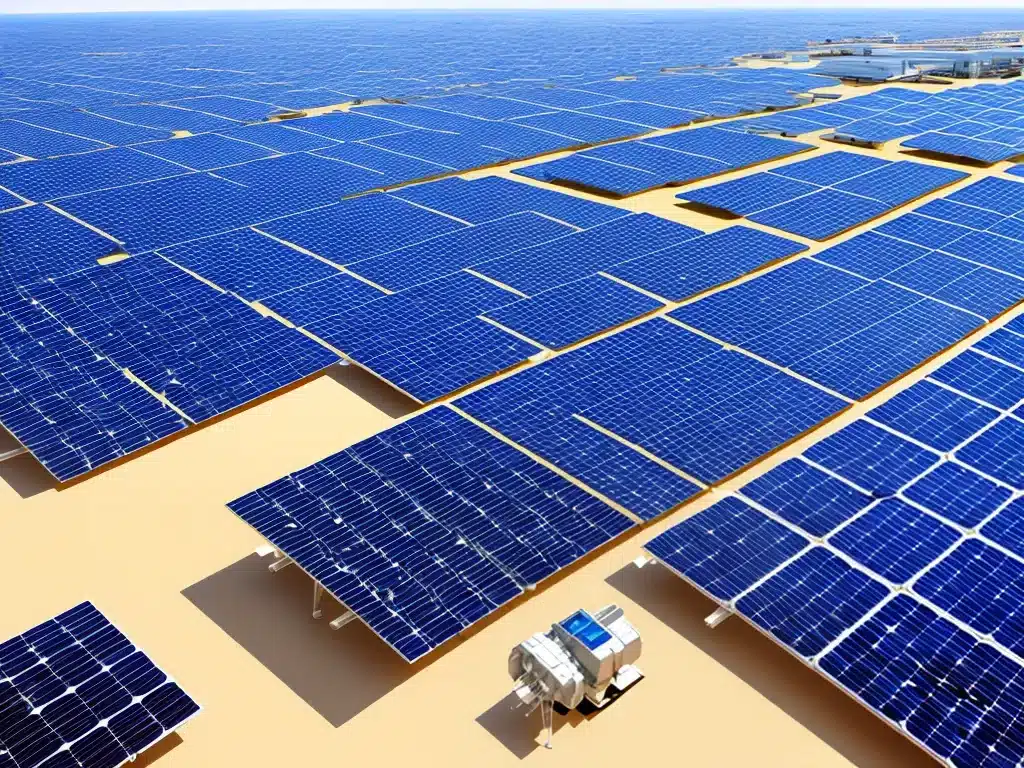
Introduction
Solar energy is the most abundant energy resource on Earth. The amount of solar energy that hits the Earth’s surface in one hour is more than the entire world uses in a year. Solar satellites have the potential to harness this abundant solar resource in space and beam the energy down to Earth, revolutionizing the world’s energy production. In this article, I will explore how solar satellites work, the benefits they could provide, the challenges to overcome, and whether solar satellites could realistically transform global energy production.
How Do Solar Satellites Work?
Solar satellites, also called space-based solar power (SBSP) systems, would collect solar energy in space and wirelessly transmit it to Earth. They would work as follows:
-
Large solar arrays with photovoltaic cells would be assembled in space. Being above the atmosphere means they can collect solar energy 24/7. The arrays could be kilometers wide and produce gigawatts of power.
-
The solar arrays would convert sunlight into electricity. The electricity would be sent to an onboard transmitter and converted into radio or microwave frequencies.
-
The energy transmission is beamed wirelessly to a receiving station on Earth through a tight, low-divergence laser or microwave beam.
-
At the Earth station, the energy is converted back into electricity and fed into the existing electrical grid.
Potential Benefits of Solar Satellites
Solar satellites have some major advantages over ground-based solar:
-
24/7 energy collection: Being in orbit means direct access to sunlight 99% of the time. Terrestrial solar is limited to daytime and good weather.
-
Higher solar intensity: Solar energy in space can be up to 144% stronger than on Earth’s surface.
-
Large collection areas: The solar arrays can be kilometers across and positioned optimally.
-
No land usage conflicts: Solar satellites don’t take up valuable land. Terrestrial solar farms have faced land usage disputes.
-
Transmission: The wireless energy transmission avoids the huge costs of cables and losses over long distances.
-
Consistent baseload power: Satellites can provide continuous baseload power to the grid, day and night.
If solar satellites live up to their promise, they could provide consistent, clean energy anywhere in the world. A fleet of solar satellites could potentially supply a significant portion of the world’s electricity demand.
Challenges Facing Solar Satellites
While solar satellites have enormous potential, there are daunting engineering and economic challenges:
-
Expense: Building and launching the infrastructure will require huge upfront investments, likely trillions of dollars. The cost per kWh may be prohibitive.
-
Launch costs: With current launch costs, sending the materials to build massive solar arrays and transmitters into orbit is incredibly expensive. Reusable rockets like SpaceX’s Starship could help.
-
In-space construction: Building solar arrays and transmitters of this scale in orbit is extremely complex and untested. It would require dramatic advances in robotics and in-space manufacturing.
-
Wireless power transmission: Beam control and conversion back to electricity with high efficiency is very difficult, especially at scale. The beam needs to stay on target and not diffuse.
-
Energy density: The wireless energy transmission must have a high enough energy density to be collected meaningfully on Earth. Otherwise, the receiving stations would have to be impractically enormous.
-
Environmental concerns: There are uncertainties around the risks of widespread wireless power transmission through the atmosphere, such as the effect on wildlife.
Is Change Realistic?
Given the enormous scale of the global energy system, it is unlikely that solar satellites will transform worldwide energy production in the near future, even if the technology matures. However, solar satellites could begin making a contribution in the coming decades.
To realize their potential, the cost and feasibility of launch services must improve dramatically. Key innovations in reusable rockets, in-space manufacturing and robotics can help enable this. Supportive government policies will also be essential for early infrastructure development. International cooperation could help fund such expensive megaprojects.
Initial real-world testing of end-to-end systems will be crucial. Some companies are already developing small-scale prototype satellites. While mass adoption is still far away, solar satellites may emerge over time as one component in the world’s diversified renewable energy mix. But fully transforming global production? For the foreseeable future, that remains in the realm of science fiction.
Conclusion
Solar satellites are an exciting prospect for large-scale solar energy from space. While the technology holds promise, immense financial and engineering obstacles mean solar satellites are unlikely to completely transform the world’s energy production anytime soon. But with critical innovations in launch and transmission systems, solar satellites could begin supplementing Earth’s energy needs in a sustainable way and play a role in our clean energy future.












